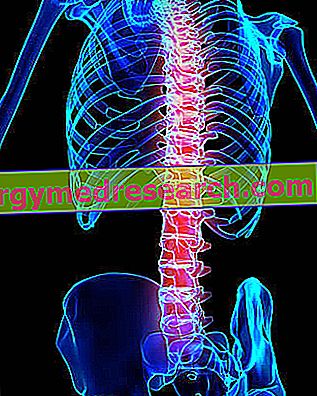
Anorexia nervosa is a serious psychiatric illness characterized by: inability to maintain a minimum physiological weight, fear of gaining weight and a recurring concern about one's physical form and weight.
In anorexia, fear is not a simple fear, but rather a real terror that drives those affected to fast and / or perform extreme acts of purgation or compensation after meals (generally in secret).
Anorexia is associated with significant morbidity and a mortality rate higher than that of many other diseases of the same field. On the other hand, almost always, anorexia nervosa is characterized by the presence of other comorbidities (or severe symptoms) such as recurrent anxiety, obsession and depression.
Nevertheless, in the following article, these very important psychiatric components will be deliberately neglected, leaving space instead for the nutritional / metabolic sphere; more precisely, the health of the skeleton (bone tissue) will be taken into consideration.
Not everyone knows that anorexia nervosa, prevalently serious, is frequently associated with low bone mineral density (BMD); this complication of the skeleton is of nutritional origin and, in turn, seems related to an increased risk of fractures.
Moreover, in adolescent age, it is quite common that anorexia nervosa compromises reaching peak bone mass, negatively affecting growth and predisposing to osteoporosis of the third age
A research published in 2010 entitled " Bone Healt in Anorexia Nervosa ", was undertaken with the aim of detecting the causes of bone compromise in anorexia nervosa and, possibly, understanding the possible therapeutic strategies to be used in the case.
It was therefore discovered that, in this psychiatric pathology, low BMD is consequent or associated with several factors: decrease in lean mass (any tissue other than adipose tissue), hypogonadism, reduction of insulin-like growth factor-1 (IGF- 1), relative hypercholesterolemia and further hormonal alterations caused by lack of energy.
In anorexic subjects who suffer from a similar clinical picture, weight gain is able to improve compromised bone status, even if adaptations are difficult to observe in follow-up controls.
The dietary supplement with vitamin D, as well as the administration of oral estrogen, does not seem to have positive effects on improving bone density; in the latter case, it cannot be excluded that there is an interference linked to the metabolic abnormalities of the IGF-1.
On the contrary, the administration of transdermal oestrogens on adolescents suffering from anorexia nervosa is effective for increasing skeletal mass, but even in this case it is difficult to observe in the various follow-up controls.
The administration of recombinant IGF-1 associated with oral estrogen would increase BMD in adults with anorexia nervosa.
Finally, the allocation of bisphosphonates appears to increase bone density in adults but not in adolescents; due to their very long half-life, these molecules must be used with extreme caution.
In conclusion, further investigations would be needed to better understand which therapies could be useful to improve the lowering of BMD in anorexia nervosa. Certainly, weight gain must be encouraged; in addition, transdermal administration of estrogens in adolescents, and the allocation of bisphosphonates in adults, appear to have a potential therapeutic role.



